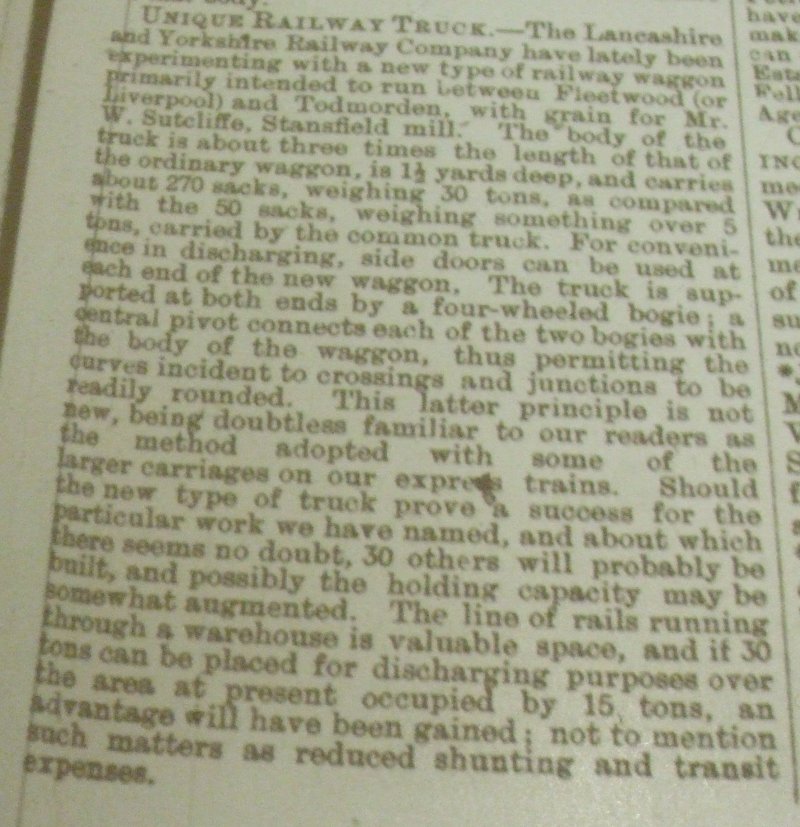
Freight facilities
In the Todmorden area there were four distinct areas for the receiving and delivery of freight, plus a further area for marshalling and aggregation of traffic from other yards.
These were:
1. the goods yard on the Up side of the main line just west of Todmorden station
2. the woollen warehouse also on the Up side of the line, and within the confines of the passenger station itself, served by sidings off the bay platform
3. the goods shed on the Down side of the line, served by the loop that ran behind the Leeds-bound platform
4. the Fielden's private siding located at Hall Royd level crossing, and now under the Copy Pit lines at Hall Royd Road bridge
5. the sidings on the Down side of the line between Todmorden East box and Hall Royd Road bridge.
The expansion and construction of the main goods yard was possible after the construction of the 'Great Wall of Todmorden'. The Wall was required after a landslip that occurred in August 1881. The yard was ultimately lifted and now forms the current station car park. A footpath at the Manchester end allows examination of the remaining parts of the site.
The woollen warehouse was on three floors, with the top floor serviced by two tracks off the bay platform. Chris Littleworth has observed a curious signal on the East box diagram which appears to be within the warehouse. The warehouse was latterly derelict and eventually demolished in the early 1970s.
The goods warehouse on the other side of the line disappeared much earlier, being dismantled in the early to mid-1950s.
The Fielden's private siding was removed sometime after the road bridge was erected at Hall Royd, the original track layout surviving the removal of the level crossing c. 1904.
The sidings at Hall Royd received and dispatched freight to various local yards. Certainly one of the banker's duties was to take time out from banking mid-morning to trip wagons up to and back from Walsden yard.
The L&YR was an early adopter of bogie waggons (note the double 'g'), and this piece from the Todmorden Advertiser dated 21 April 1893 suggests that the introduction of the prototype covered bogie van was for a specific Todmorden traffic from Fleetwood (although Liverpool is also mentioned). The precise location of Stansfield Mill is unknown, but the private sidings at Hall Royd would have been convenient for Stansfield Hall.

